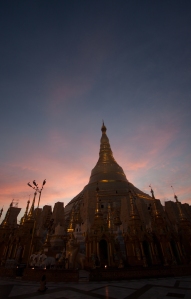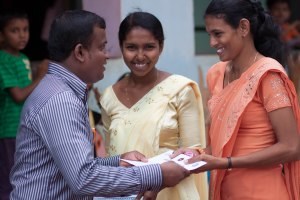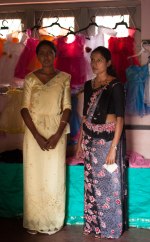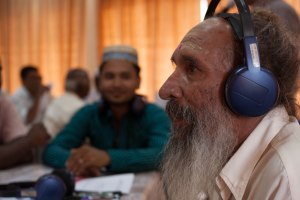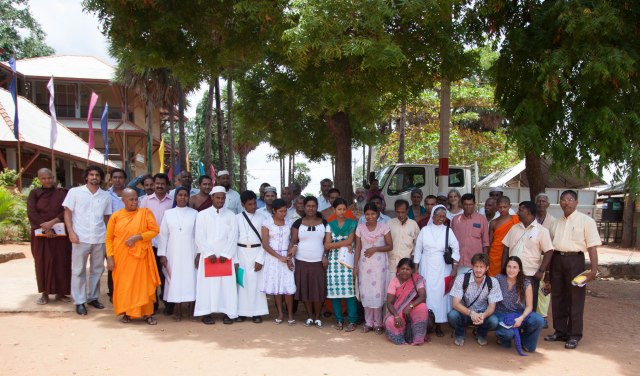The room is a blurry haze; the bright orange of monastic robes saturate her vision and her feet seem to hover as she moves to an open chair. Her mind is distant and she can’t feel a thing but for a sensation of cold emptiness that presses against her chest, growing and growing, threatening to freeze her. She raises her eyes – they are heavy and wet with tears – but the faces of those around her are tranquil; at ease, as if someone has not just died.
*****
Having just finished a two week Vipassana meditation retreat in Burma, I was impressed by the calm, serene and balanced composure of the Sayadaws (teachers). I couldn’t help but wonder, would they cry at a funeral? What keeps equanimity from becoming indifference, or rather, isn’t equanimity indifference?
The mental state of upekkha, equanimity, is essential to attain enlightenment. It enables us to maintain mindfulness (sati) in every situation. We could be eating good food or tasteless food, experiencing immense pain or pleasure, cursed or praised, and upekkha will protect us from being carried away by these experiences. Nonattachment is unbroken in its presence, and Right View is affirmed as we recall that everything breaks down to nama-rupa, or mind-matter phenomena which arises and ceases in each moment. One technique I have come across to generate equanimity is to think of someone’s misfortune or fortune as the reaping of his or her kamma.
Wait. What does that really mean? If a bus is out of control and unable to steer itself away from an oblivious man, should we warn him? If we don’t, is it not because of his kamma that he will be killed and his own fault? This is simplistic, I know, but it gets to the point – if bad fortune is due to that person’s bad kamma, should we feel responsible to help those who are vulnerable? If so, where does that sense of responsibility come from?
In Sayadaw U Pandita’s book, “In This Very Life”, he writes “equanimity is not insensitivity, indifference or apathy. It is simply nonpreferential. Under its influence, one does not push aside the things one dislikes nor grasps at things one prefers. The mind rests in an attitude of balance and acceptance of things as they are.” If not insensitivity, then is equanimity sensitivity? If not indifference and apathy, is it caring? And finally, how can we be “nonpreferential” while exercising another of the sublime mental states (Brahmin Vihara) – compassion? To me, compassion (karuna) necessarily implies a preference, namely that I am unpleased with the current situation and wish to improve it.
In U Pandita’s discourse, he emphasizes the importance of cultivating compassion alongside wisdom, so action is be guided with precise aim to effectuate positive change. Compassion without wisdom can be extremely dangerous; we act with a desire to do good, but in fact cause more harm! We may justify the impact of our actions by proudly standing behind our intentions. But as the saying goes, “the road to hell is paved with good intentions.” Clearly, compassion isn’t enough.
Wisdom (panna) and equanimity go hand-in-hand. One of the three characteristics of existence (tilakkhana) is anatta, or non-self. Anatta is a profound concept and definitions like “devoid of an inherent existence” can be misleadingly vague. I will not elaborate on anatta here, but I encourage you to see link below for an in-depth description. Instead, I’d like to point out the implication of anatta: we are not truly in control of ourselves or the world around us; we cannot stop aging, nor can we control the choices our loved ones make. Some things will not go as planned no matter how hard we try; inevitably yielding results that can be disappointing. And it is undeniable that the more we invest ourselves in effort, the more attached we can become to the result. Anatta reminds us the folly of such investment.
Understanding this aspect of anatta, equanimity is steadfast and strong. Actions are not influenced by attachments but guided by the clarity of wisdom. Neither “success” nor “failure” distracts us from our goal, allowing us to reassess and invest ourselves in the situation free from emotional antagonisms. Fortified by equanimity, compassion takes its noblest form: accurate, effective, and unquestionably selfless.
“What the Buddha Taught” by Walpola Rahula, online & free: https://sites.google.com/site/rahulawhatthebuddha/the-doctrine-of-no-soul
